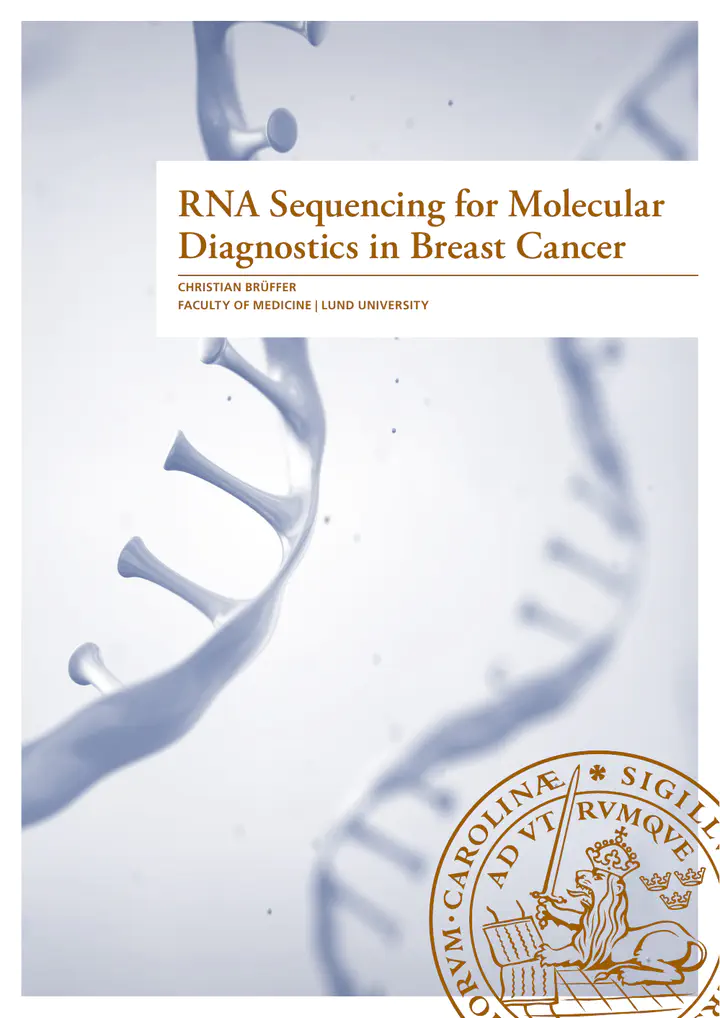RNA Sequencing for Molecular Diagnostics in Breast Cancer

Abstract
Breast cancer is the most common type of cancer in women and, in Sweden, is the most deadly second only to lung cancer. While treatment and diagnostic options have improved in the past decades and short- to mid-term survival is good, long-term survival is much poorer. On the other hand, many women are likely cured by surgery and radiotherapy alone, but receive unnecessary adjuvant treatment leading to undesirable health-related and economic side-effects. Reliably differentiating high-risk from low-risk patients to provide optimal treatment remains a challenge.
The Sweden Cancerome Analysis Network–Breast (SCAN-B) project was initiated in 2009 and aims to improve breast cancer outcomes by developing new diagnostics and treatment-predictive tests. Within SCAN-B, tumor material and blood are being biobanked and the transcriptomes of many thousands of breast tumors are being analyzed using RNA sequencing (RNA-seq). The resulting sample collection and dataset provide an unprecedented resource for research, and the information therein may harbor ways to improve prognosis and to predict tumor susceptibility or resistance to therapies.
In the four original studies included in this thesis we explored the use of RNA-seq as a diagnostic tool within breast cancer. In study I we described the SCAN-B processes and protocols, and analyzed early data to show the feasibility of using RNA-seq as a diagnostic platform. We showed that the patient population enrolled in SCAN-B largely reflects the characteristics of the total breast cancer patient population and benchmarked RNA-seq against prior techniques. In study II we diagnosed problems in commonly used RNA-seq alignment software and described the development of a software tool to correct the problems and improve data usability. Study III focused on diagnostics for determining the status of the important breast cancer biomarkers ER, PgR, HER2, Ki67, and Nottingham histological grade. We assessed the reproducibility of histopathology in measuring these biomarkers, and developed new ways of predicting their status using RNA-seq-based gene expression. We showed that expression-based biomarkers add value to histopathology by improving prognostic possibilities. In study IV we focused on the prospects of using RNA-seq to detect mutations. We developed a new computational method to profile mutations and used it to describe the mutational landscape of thousands of patient tumors and its impact on patient survival. In particular, we identified mutations in a subset of patients that are known to confer resistance to standard treatments.
The hope is that, together, the diagnostic results made possible by the studies herein may one day enable oncologists to adapt treatment plans accordingly and improve patient quality of life and outcomes.